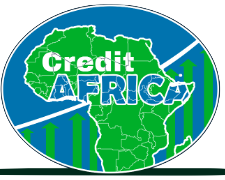Despite the significant progress made in expanding mobile money across Africa, true financial inclusion goes beyond access it requires understanding. For millions of Africans, especially in rural or underserved communities, mobile wallets are the first touchpoint with formal financial systems. But without the knowledge to use them wisely, the potential for transformative impact remains limited.
So, how do we turn access into empowerment?
The Case for Integration: Mobile Money + Financial Literacy
Mobile money platforms have already changed the game by making it easier to send and receive money, pay bills, and even access microloans. But these tools are only as powerful as the people using them.
Enter: financial literacy interactive tools that teach users how to budget, save, avoid debt traps, and plan for the future.

The Synergy Matters
Mobile Money Builds Bridges:
In areas with little to no physical banking infrastructure, mobile money acts as a bridge to the formal economy, helping people participate in commerce, receive remittances, and build savings.
Financial Literacy Strengthens Foundations:
Financial literacy ensures that people understand how to use these services to build long-term financial health not just meet short-term needs.
Together, They Scale Impact:
Combining both creates a more holistic and inclusive financial ecosystem that benefits users, service providers, and the broader economy.
Can Mobile Money Solutions Alone Drive Financial Inclusion in Africa?
As Africa continues to experience rapid growth in mobile phone adoption, mobile money solutions have emerged as a key driver of financial inclusion. However, the question remains: can mobile money solutions alone drive financial inclusion in Africa?
The Potential of Mobile Money Solutions
Mobile money solutions have revolutionized the way Africans access financial services, providing a convenient, affordable, and accessible way to make transactions, save, and borrow. With millions of Africans now using mobile money services, it’s clear that these solutions have made a significant impact.
Limitations of Mobile Money Solutions
However, despite the progress made, mobile money solutions have limitations. For example:
- Limited functionality: Mobile money services often provide limited financial products and services, such as savings, credit, and insurance.
- Interoperability issues: Different mobile money platforms often lack interoperability, making it difficult for users to transfer funds between platforms.
- Dependence on mobile networks: Mobile money services rely on mobile networks, which can be unreliable in some areas.
The Need for a Comprehensive Approach
To drive meaningful financial inclusion in Africa, a more comprehensive approach is needed. This could include:
- Digital financial services: Expanding digital financial services to include a wider range of products and services, such as savings, credit, and insurance.
- Financial literacy: Promoting financial literacy and education to help Africans make informed decisions about their financial lives.
- Infrastructure development: Investing in infrastructure development, such as agent banking and point-of-sale devices, to increase access to financial services.
While mobile money solutions have made significant progress in driving financial inclusion in Africa, they are not enough on their own. A more comprehensive approach that includes digital financial services, financial literacy, and infrastructure development is needed to achieve meaningful financial inclusion.
Share your thoughts on the role of mobile money solutions in driving financial inclusion in Africa. Can mobile money solutions alone drive financial inclusion, or is a more comprehensive approach needed?



